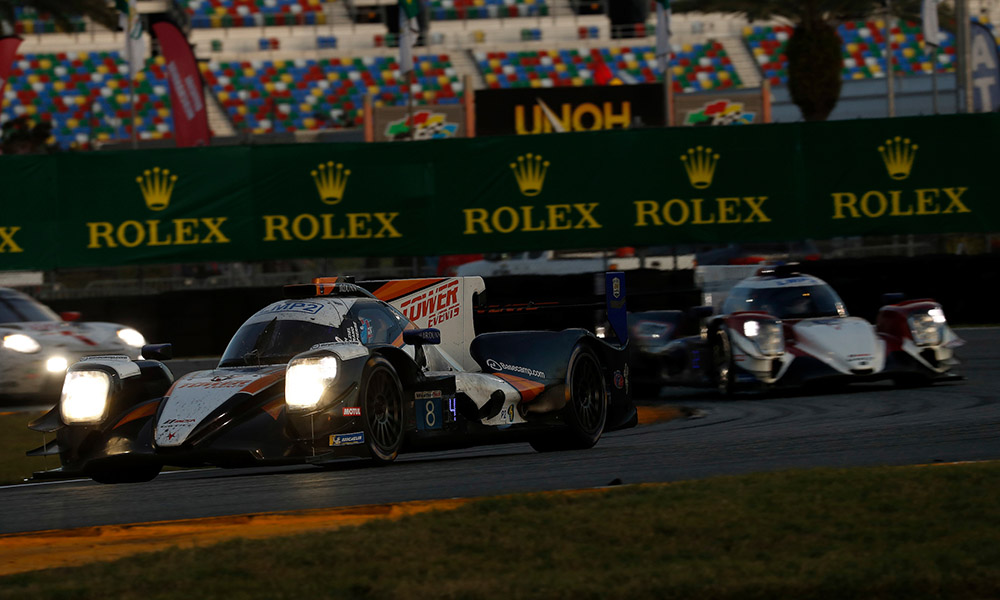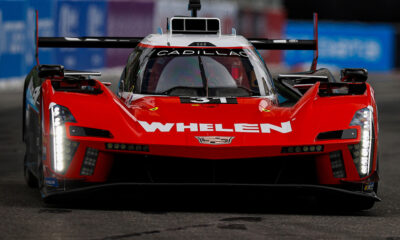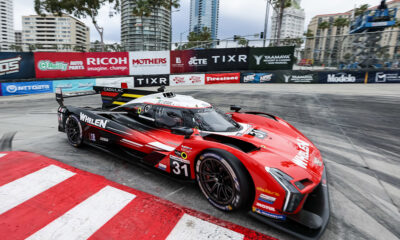
Photo: Mike Levitt/IMSA
Peter Baron believes the current travel restrictions and uncertainty over a potential second wave of COVID-19 infections could end up being a benefit to the LMP2 car count in the IMSA WeatherTech SportsCar Championship, with U.S.-based gentlemen drivers looking to focus their efforts in North America next year.
The Starworks Motorsport team owner, who fields an Oreca 07 Gibson for Canadian-based businessman John Farano, said that interest in potential WeatherTech Championship programs has increased in recent months, largely from drivers, like Farano, who had based their programs in Europe.
Coupled with the grid sizes in the European Le Mans Series, increased competition and the lack of an enforcement of a Bronze-rated driver in the ACO-run series could all play into IMSA’s hands in the next six months.
“We’ve had conversations with North American-based drivers that have gone to the European Le Mans Series and WEC because dollars and opportunities made it a lot more appealing,” Baron told Sportscar365.
“Now in P2 in Europe you have to have that pro Silver. You can’t do it how we did it with a gentleman Silver anymore.
“A lot of those guys that are Bronze drivers are fed up with having to compete against three pros in the car.
“That coupled with coming out of the [first wave] of the COVID-19 virus. Who knows what happens if there’s another [wave].
“I think people are looking to stay more within North America next year instead of international travel.
“The phone has been ringing with that situation, about not wanting to travel to Europe or Asian countries in the foreseeable future.”
IMSA’s overhaul of its LMP2 class, which introduced a Bronze driver mandate and reduced six-round championship that did not include the Rolex 24 at Daytona, has been met with mixed feelings from team owners.
A total of five cars took part in the Daytona enduro, with talk of a potential dip in entries later this year due to several drivers’ financial situations.
Baron believes that opening up the class to allow Silver-Silver lineups, instead of one Bronze and a pro, could help promote further growth.
He considers the Bronze mandate a “good news/bad news” situation in that it’s brought a number of gentlemen drivers back to the IMSA paddock although currently discourages any up-and-coming driver, that typically has budget, from racing in the class.
“If there was a way to get Silver drivers in there full-time, like a Silver-Silver lineup, I think that would help a whole bunch,” Baron said.
“It is very strange when you have these kids that haven’t driven much at all and their automatic first rating is Silver.
“They have no business competing against [pros].
“If there’s a way to tap into those drivers and bring them in competitively, I think that would be a big help.”
Manufacturer Cutbacks More Concerning for Future of Sport
Baron believes that the elimination of factory programs in IMSA will be more damaging in the long run compared to budget cutbacks in other classes such as GT Daytona.
“If you look at it historically, there’s always been these select few gentlemen drivers that come in and fill the gaps,” he said.
“I think the biggest loss is the factory teams and all of these big manufacturers reporting massive loses and layoffs.
“Much like Porsche disappearing from GTLM, that [loses] stability in that class. Other manufacturers are going to start to look at that in the DPi realm.
“I’m worried about that and obviously when you talk about manufacturers, they bring the marketing dollars and a whole bunch of financial support to the series. That’s a bit more of a scarier one.
“The gentlemen driver market always tends to level off where it needs to be. If drivers aren’t coming up with the targeted budgets, then the classes will evolve to what it needs to be.
“GTD teams showing up with 15 people, natural selection will just drop it down. It’s unfortunately like the PC class, where the budgets tended to be half of what it needed to be in the end.”
























